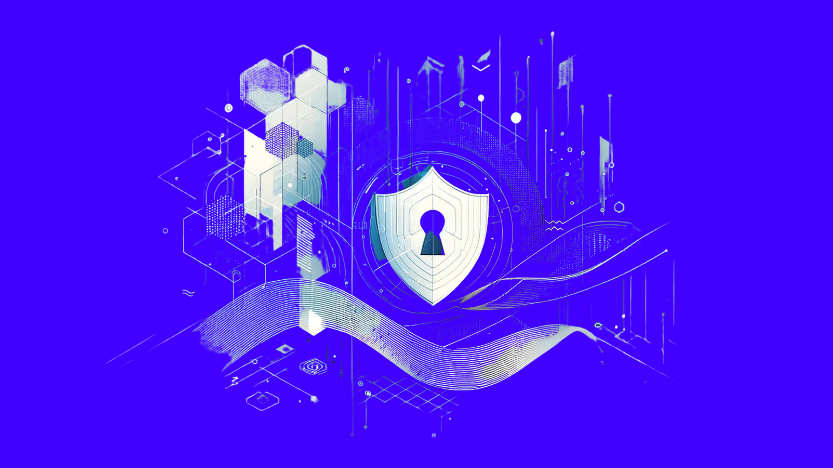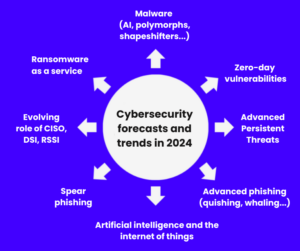Test Altospam’s solutions!
Thousands of companies, CTOs, CIOs, CISOs and IT managers already trust us to protect their e-mail against phishing, spear phishing, ransomware, …

Paris 2024 risks “eight to ten times more than the Tokyo Games” confides Bruno Marie-Rose, the event’s technology director. These threats are exacerbated by the cyberwar in Ukraine. During the previous Summer Olympics in Tokyo, 450 million attacks were recorded. Indeed, while these sporting events generate widespread enthusiasm, they are not immune to serious cybersecurity threats. This is precisely what the ANSSI emphasizes in its latest report, highlighting the diversity of information systems that could be targeted.
2023 is drawing to a close, and companies are immersed in drawing up their future action plans and budgets. According to Gartner, by 2026 generative artificial intelligence will significantly alter 70% of IT design and development effort. Cyber-attack techniques are evolving, and hackers are developing increasingly sophisticated methods to counter existing security measures.
Several types of cyberattack were highlighted in 2023, and will continue to evolve in 2024. The key issue is the sophistication of these attacks. In effect, it’s the evolution of ransomware, malware and phishing techniques.

Threat detection is essential to protect organizations, especially VSEs, SMEs and ETIs, against evolving cyberattack trends. There are a number of tools and technologies designed to detect and counter these attacks. By combining advanced e-mail security solutions with training and awareness programs, companies can strengthen their security against the hidden tactics of hackers. Continuous vigilance is essential.
In 2024, organizations will invest more in e-mail security training and awareness programs to educate their staff on the latest e-mail threats and best practices. This will enable teams to identify and report suspicious e-mails more quickly.
Before countering these threats, it’s important to know who they’re targeting. This question remains crucial, even if current events prove that cyber attacks can affect any type of business. Just as the question of whether the cost of a cyber attack is greater for an SME than for a global corporation is complex, and depends on a number of factors. Risks therefore include the healthcare and energy sectors, SMEs, companies dependent on the cloud, and those with access and identity management problems.
The risk of saturation is high among these professionals. Between burnout and data loss, IT and cybersecurity managers are the first victims. According to a study on the state of cybersecurity, 73% of employees will have resigned due to burnout in 2022, compared to 81% in 2023. This increase highlights the considerable weight these players carry on a daily basis.
Their responsibilities are increasing further, particularly with the implementation of the NIS 2 directive (Network and Information Security, second version). Adopted in January 2023, companies have until October 17, 2024 to bring themselves up to date. It succeeds the NIS 1 directive and introduces new measures to ensure a high level of security for networks and information systems.
In 2024, the sanity of these professionals is increasingly put to the test due to the constant evolution and sophistication of cyber attacks. Managers not only have to protect their organization’s critical infrastructures, but also ensure compliance with ever-changing security standards, significantly increasing pressure and stress at work.
By 2024, e-mail authentication methods will have undergone significant improvements. Technologies such as Domain Based Authentication, Reporting and Compliance (DMARC) and Domain Key Identified Mail (DKIM) will continue to evolve to provide stronger authentication and better protection against e-mail spoofing and spoofing. The aim is to help organizations build trust in e-mail communications and reduce the chances of falling victim to phishing attacks.
To protect your business against these growing threats, you need to :
By anticipating these developments, you can strengthen your messaging security for years to come. Companies need to adapt by raising security awareness, training staff and implementing robust security measures to deal with these threats. This includes using advanced security solutions and regularly reviewing security policies to stay one step ahead of cybercriminals.
In 2024, protection against cyber attacks requires a comprehensive approach, combining awareness, advanced technologies, and proactive strategies. Advanced solutions like Altospam’s Mailsafe (anti-phishing, anti-spear phishing, anti-malware and anti-ransomware), play a key role in securing businesses against increasingly sophisticated threats. By adopting these measures, companies can not only adapt quickly but also defend themselves against the evolution of cyber-attacks.
Test Altospam’s solutions!
Thousands of companies, CTOs, CIOs, CISOs and IT managers already trust us to protect their e-mail against phishing, spear phishing, ransomware, …